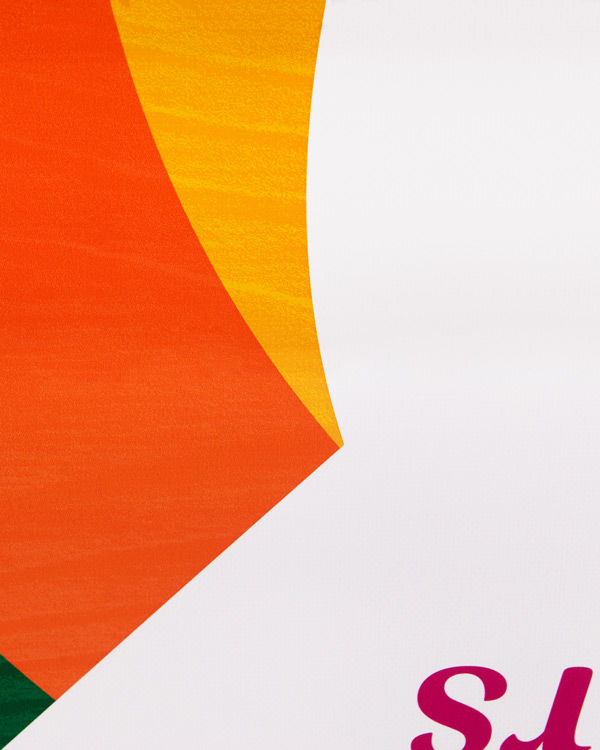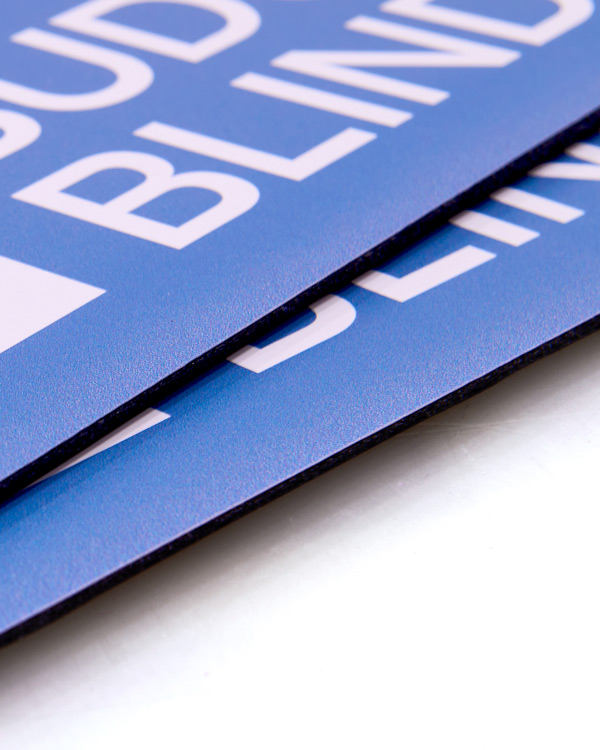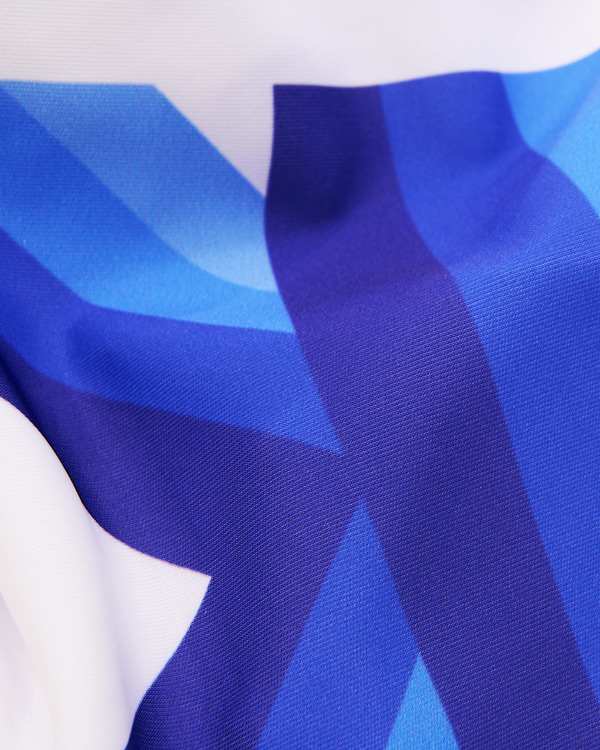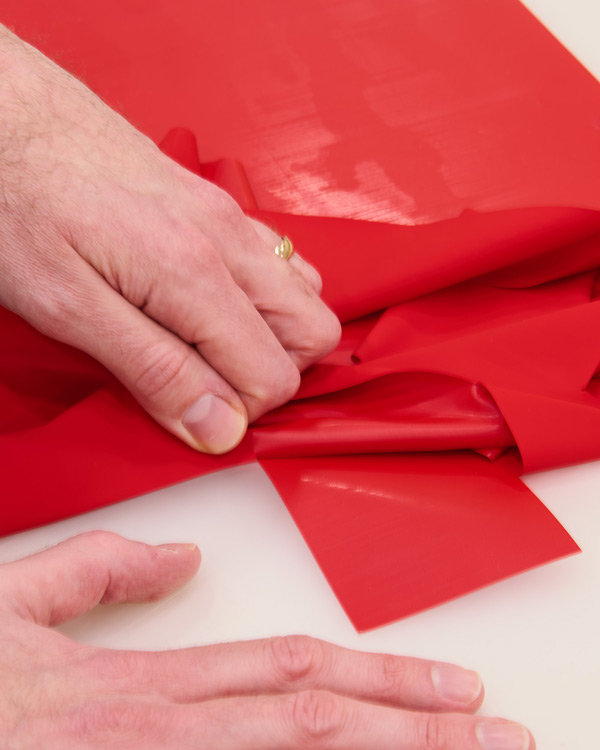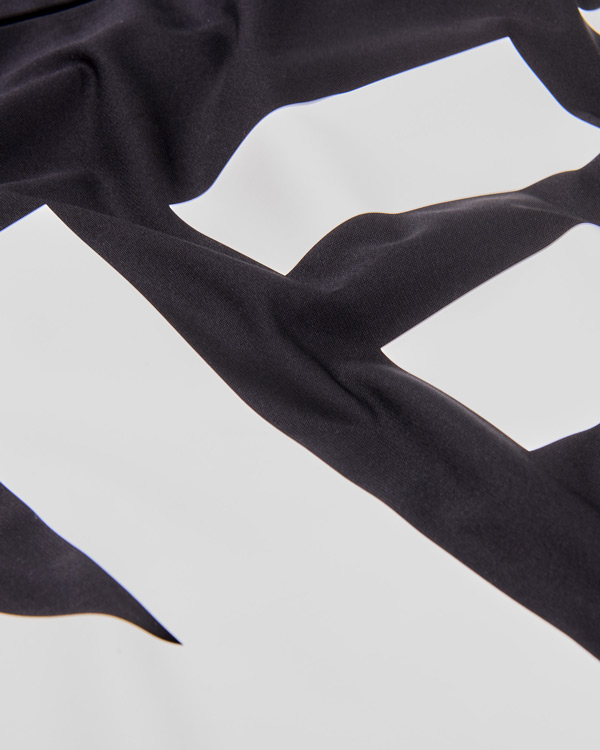Stand Out with Custom Printing by Displays2go
At Displays2go, we’ve invested in our in-house printing technology and expertise to offer a best-in-class experience for your branding efforts. We offer a breadth of personalizable products and are constantly expanding our selection to fit the needs of our customers, no matter your industry or the size of your business. Whether you just need one custom printed podium or enough custom printed table covers to outfit an entire event, Displays2go is here to help your design stand out.
What types of printing does Displays2go offer?
When you find the right product for your job, you might see one of a few different types of printing methods listed. Each customized product we offer is tied to a specific type of printing, carefully chosen by our product development team to suit the intended use and the conditions it is likely to encounter in the wild. We weigh the benefits and limitations of each print method and select the optimal one for that particular product. Although the printing type is dictated by your product selection, it can be helpful to have an understanding of the technology behind that particular method and how you should tailor your designs to work best. Here’s a brief description of our offerings and how they differ from each other:
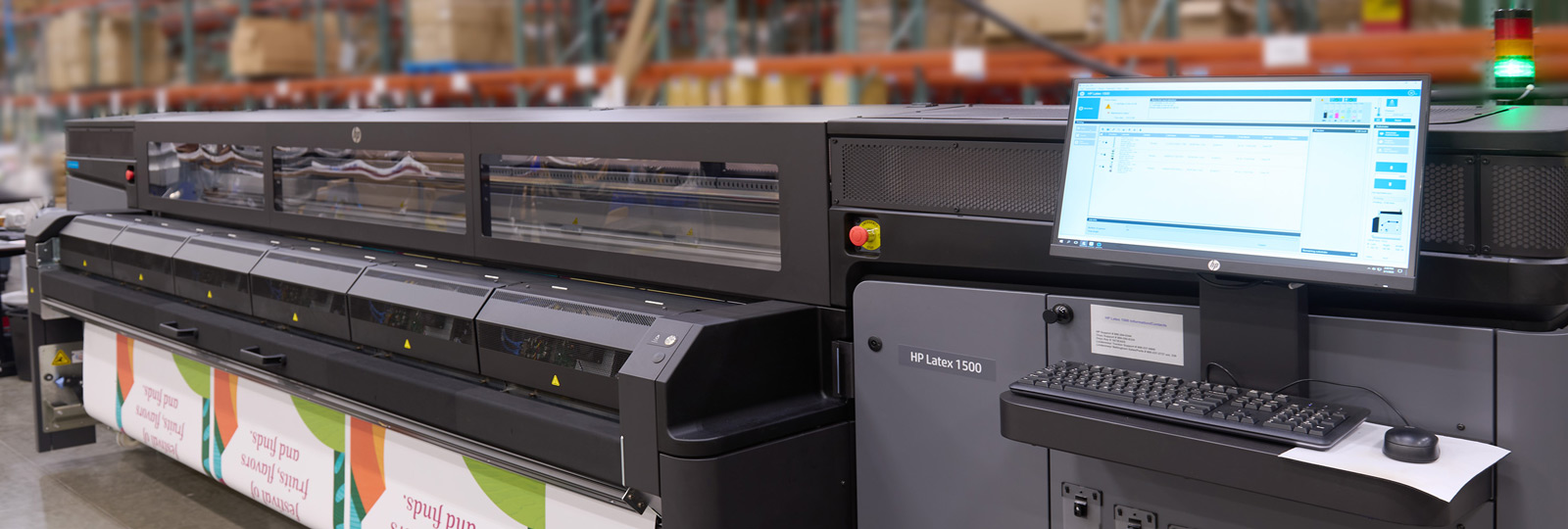
Latex Printing
Colors
Full color, no limit on number of colors.
How does latex printing work?
Latex printing is a direct-to-print method that uses specialized inks that are fired onto a substrate, then cured almost immediately with high temperatures to produce a crisp, high-quality image. Each droplet of ink contains pigment and a latex polymer suspended in water. When heated, the water evaporates and the latex is activated, binding the pigment to the substrate and leaving behind a dry, durable finished print. Depending on the substrate and project, an overcoat may be added prior to drying for additional protection.
What are the benefits of latex printing?
Latex printers are considered to be more eco-friendly than other methods as the inks are recyclable (which means finished products can be more easily recycled) and contain no hazardous air pollutants. The ink cartridges are made from recyclable cardboard as well. Some industries, like hospitals, place restrictions on the kinds of inks that can be used in their print materials, and latex inks meet these requirements, meaning latex prints can be used in a wider variety of indoor settings.
Latex prints are also known for their durability. They are scratch-resistant, abrasion-resistant, hold up well to common cleaning chemicals, and resist weathering like light fading and water exposure. This method produces some of the highest quality images as well as very vivid whites, when compared to other printing types.
What should I keep in mind when choosing a latex printed product?
While art files of most any type can typically be used to reproduce your artwork on a finished artwork, vector art is preferred. Additionally, latex printing may not be available on pre-fabricated or shaped products.
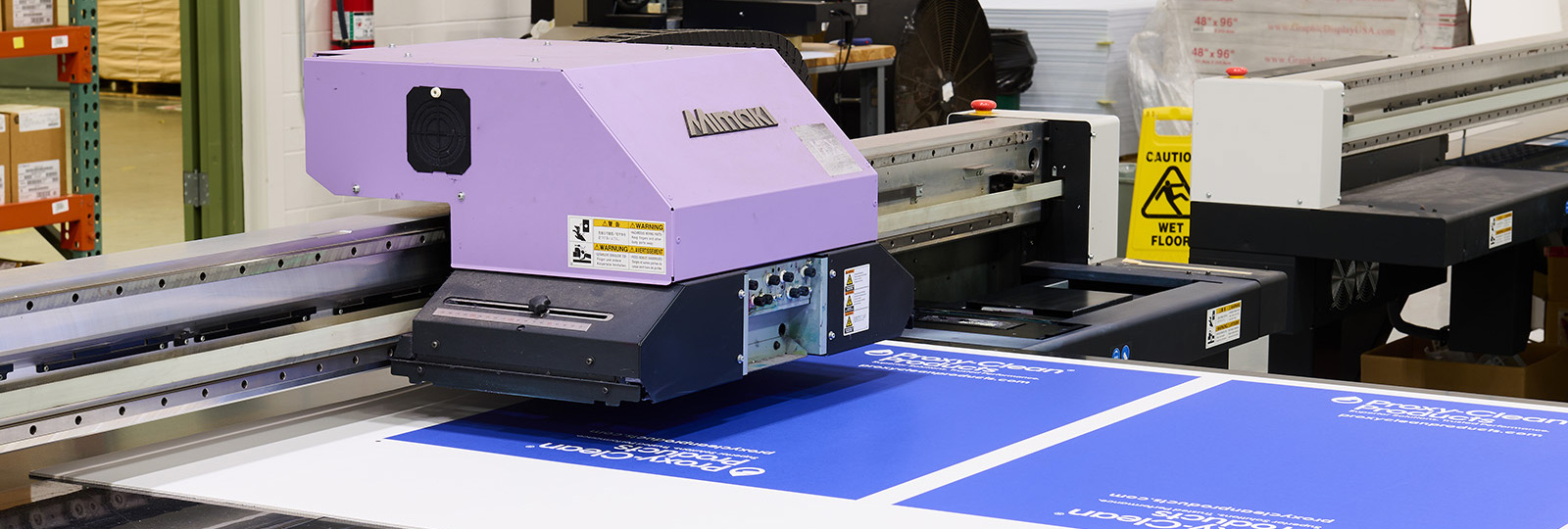
UV Printing
Colors
Full color, no limit on number of colors.
How does UV printing work?
The defining feature of UV printing is in how the ink is dried or “cured.” As the printer head moves over the substrate, it distributes tiny dots of colored ink, which is immediately cured by an ultraviolet (UV) light. If you’ve ever been to a nail salon, the process of drying nail polish under a UV light works the same way in principle.
What are the benefits of UV printing?
What this curing method means for commercial printing is that these tiny dots of ink don’t have the opportunity to spread out and blur the printed image. This allows for designs with very fine details to be reproduced as a crisp, high-quality finished print.
Because of the quick drying process, nontraditional substrates like acrylic and aluminum can be printed on directly. Additionally, the flatbed design of the printer allows for substrates up to 2” thick.
What should I keep in mind when choosing a UV-printed product?
In most cases, art files in any format can be reproduced onto the substrate of your choice. However, vector art is preferred and in the case of acrylic substrates, required to print correctly.
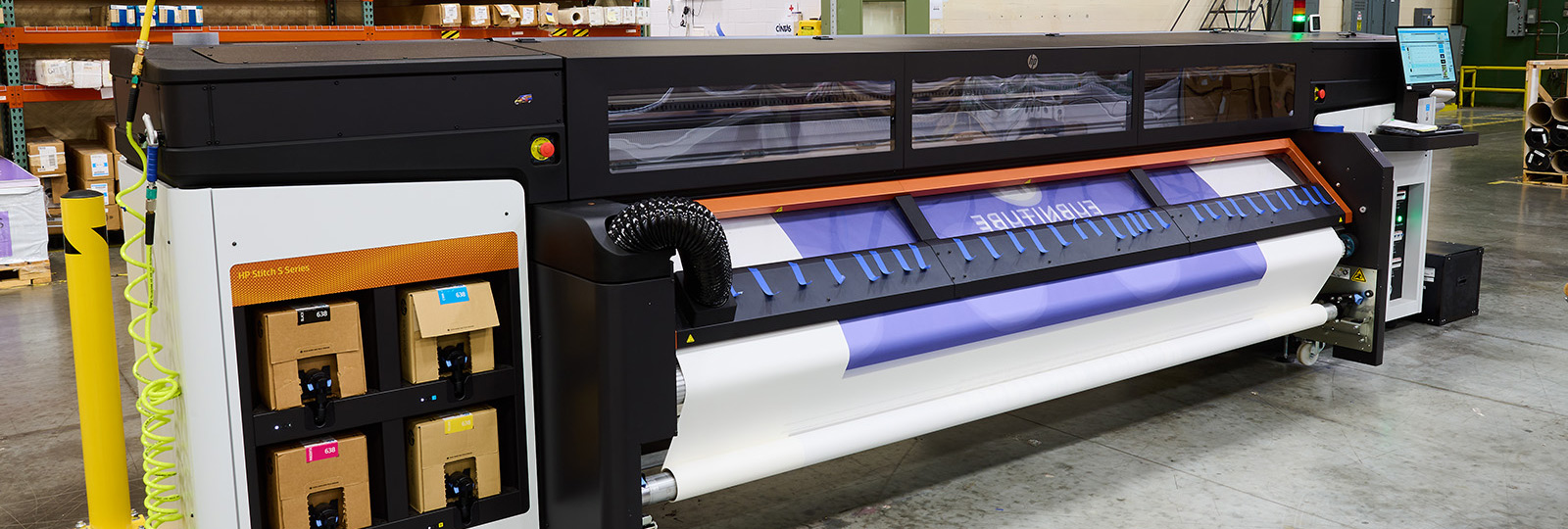
Dye Sublimation
Colors
Full color, no limit on number of colors.
How does dye sublimation printing work?
Rather than placing ink on top of a substrate, as in traditional printing, dye sublimation (or dye-sub) printers first print onto a transfer paper. That paper is then placed in contact with the final substrate and heated to high temperatures, causing the ink to deeply penetrate and dye the substrate. The inks we use for our dye-sub process are water-based.
What are the benefits of dye-sub printing?
Because the inks are chemically bonded to the fabric, dye-sub prints last for a long time. The image quality is also very high, as the process is capable of producing rich colors and clear details.
What should I keep in mind when choosing a dye-sub printed product?
Our machinery focuses solely on dye sublimation of fabrics. While using a dye-sub process on hard surfaces and more rigid substrates like acrylic and paper is possible, we use other print methods, such as latex or UV, for those materials. Because of this, the selection of products that offer dye-sub printing is limited to fabric items like flags, banners, SEG backwalls, and table covers.
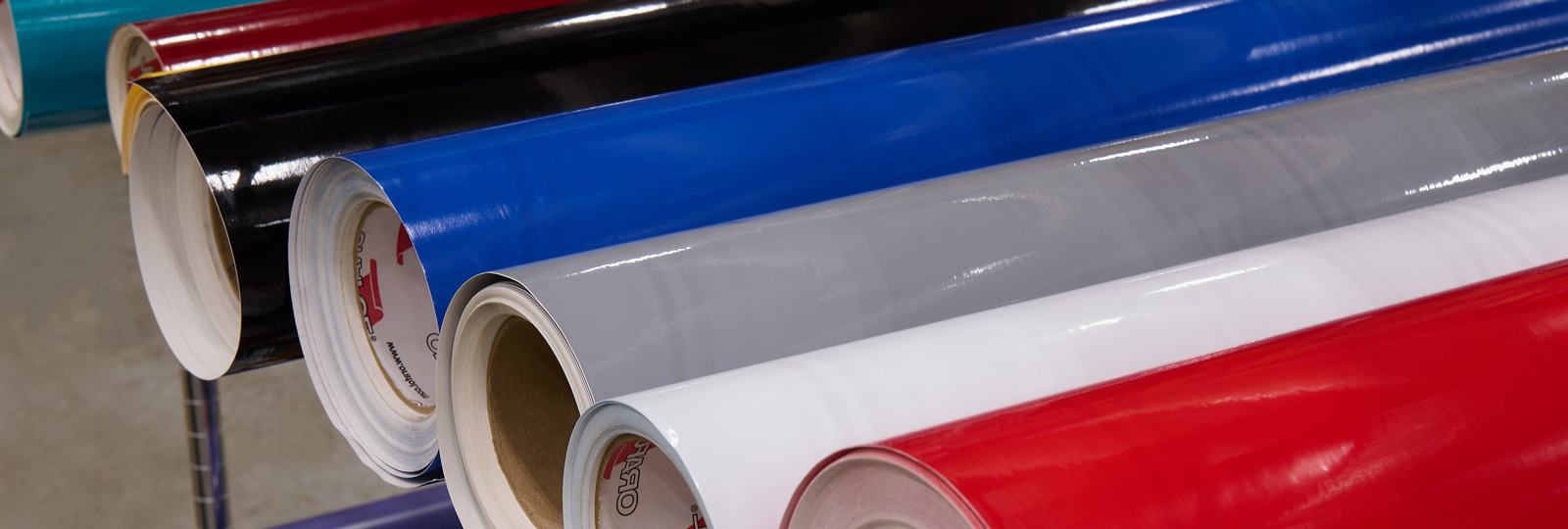
Vinyl Imprint
Colors
1 or 2 colors from a small pool of stock colors.
How does vinyl imprinting work?
Think of our vinyl imprints like a big sticker. Your design is cut from rolls of colored adhesive vinyl, then applied for you on the product of your choice. In effect, the design is not printed, but recreated using precise laser cuts and hand application.
What are the benefits of vinyl imprints?
Adhesive vinyl is durable, making it a great choice for simple logos and company names on products that will see a lot of use. Because the substrate does not need to go through a printing machine, it can be applied to a wide variety of surfaces, including curved ones.
What should I keep in mind when choosing a vinyl-imprinted product?
Designs must be kept simple. No photographs or gradients. Too many small details may not be able to be cut correctly and could get lost in the final product. Since no printing is involved, designs must use only the pool of available colors of adhesive vinyl available, limited to either one or two per design, depending on the product. Submitted designs must be in vector format. Additionally, only solid substrates can be used.
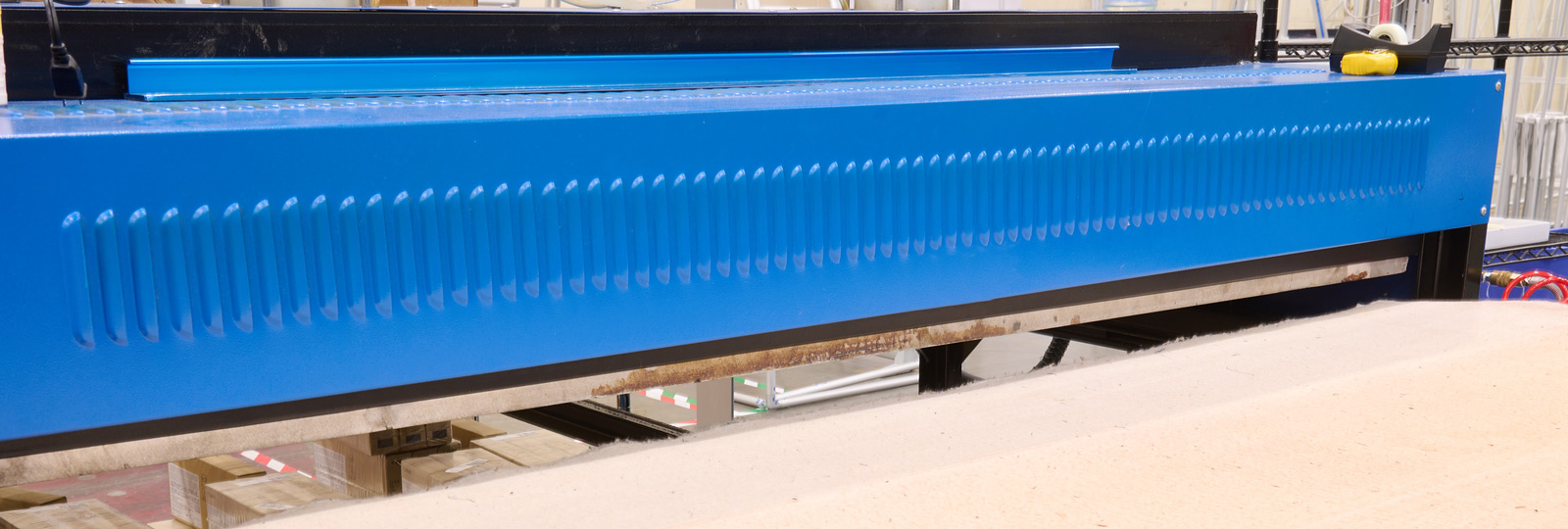
Heat Transfer
Colors
1 color from a small pool of stock colors. Color may be limited by product choice.
How do heat transfer graphics work?
Similar to our vinyl imprints, heat transfer graphics are laser cut from a sheet of colored adhesive vinyl. Rather than being simply applied to a flat surface by hand, the vinyl is laid onto a fabric substrate, then heat and pressure is used to adhere the graphic. If you’ve ever used an iron-on patch, you’ve got the general idea behind the vinyl imprint process, though the latter is much larger in scale and more precise.
What are the benefits of heat transfer graphics?
Heat transfer graphics are great for getting company logos, messages, and slogans on fabrics that will see a lot of use. Table covers, umbrella canopies, and stanchion sleeves are some of the fabrics that can be enhanced with heat transfer graphics. Because of its simplicity, this option is often cheaper than a dye-sub printed fabric product.
What should I keep in mind when choosing a heat transfer customized product?
Designs must be kept simple. No photographs or gradients. Too many small details may not be able to be cut correctly and could get lost in the final product. Since no printing is involved, designs must use only the pool of available colors of adhesive vinyl available, limited to one per design, which is often tied directly to the product itself (for instance, table covers that offer white graphics only). Submitted designs must be in vector format. Additionally, only fabric substrates can be used.
